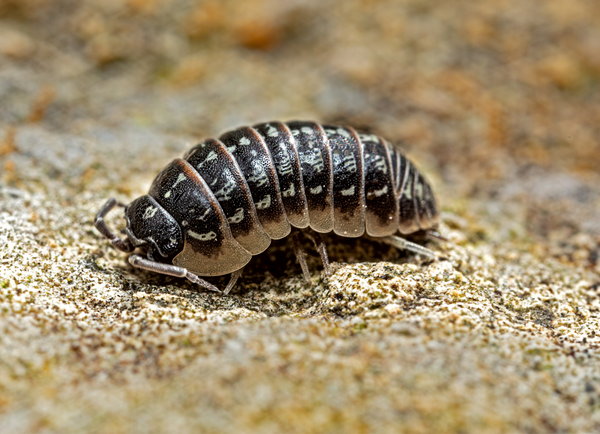Does your dog love bounding through the woods, sniffing every blade of grass, and exploring the great outdoors as if it’s their personal kingdom? While their enthusiasm for adventure is endlessly charming, it also increases their risk of running into unwanted hitchhikers like fleas and ticks. Keeping your dog protected from these pesky critters isn’t just a seasonal concern; it’s an essential part of safeguarding their health year-round.
In this post, we’ll explain why flea and tick prevention is so crucial, break down the health risks these pests pose (hint: they carry more than just an itchy nuisance!), and clarify how often your pup should get their flea and tick treatments to stay safe and sound.
Why Flea and Tick Prevention Is Non-Negotiable
Your furry friend’s floppy ears and wagging tail are magnets for joy—but also for pesky freeloaders like fleas and ticks, especially if they spend a lot of time outdoors. These pests don’t just make your dog uncomfortable; they can cause serious health issues for both pets and humans.
Fleas can lead to constant itching, skin irritation, and even allergic reactions. Did you know a single flea can bite your dog over 400 times in one day? That's an itch-fest no pup should have to endure. Fleas can also transmit tapeworms, leaving your dog with an additional health challenge to deal with.
Ticks are even bigger troublemakers. Not only can they latch onto your dog and feed on their blood (gross, right?), but they’re also carriers of serious diseases like Lyme disease, ehrlichiosis, and anaplasmosis. These infections can cause long-term health complications if left untreated, ranging from joint pain to life-threatening organ issues.
Protecting your dog from fleas and ticks isn’t just about their comfort. It’s also about safeguarding their overall health against serious complications.
Please note: Many flea and tick treatments are toxic to cats, posing a risk if they are in contact with treated dogs before the treatment dries (about 48 hours). Avoid using flea and tick collars in cat and dog households to ensure pet safety.
The Health Risks of Flea and Tick Infestations
You might think a few fleas or a tick or two aren’t a big deal, but the health risks they bring are reason enough to stay vigilant.
Fleas Bring More Than Annoyance
-
Allergic Reactions: Many dogs are allergic to flea saliva, which can cause flea allergy dermatitis. This results in intense itching and skin problems that can spiral into infections.
-
Anemia: Fleas feed on your dog’s blood, and a severe infestation can lead to anemia, especially in smaller dogs or puppies.
-
Parasites: Fleas are also vectors for tapeworms. If your dog swallows an infected flea while grooming, they could end up with an intestinal parasite.
Ticks = Disease Carriers
-
Lyme Disease: This is one of the most well-known tick-borne illnesses. Symptoms in dogs include lameness, fever, swollen lymph nodes, and in severe cases, kidney damage.
-
Ehrlichiosis and Anaplasmosis: These diseases can cause fever, lethargy, appetite loss, and, in extreme cases, bleeding disorders.
-
Tick Paralysis: Certain species of ticks can release toxins that lead to paralysis in dogs. While rare, it’s a scary consequence that most dog parents would rather avoid.
And here’s the thing—not all tick-borne illnesses show symptoms right away. Months could pass before your dog starts exhibiting signs, making regular prevention key to catching and stopping potential risks early.
How Often Should You Use Flea and Tick Medications?
Now that we’ve covered why fleas and ticks are a definite "no" for your dog, how often should you be treating your pup to keep these pests at bay? The answer depends on the type of medication you use.
Monthly Topical Treatments
Topical medications are applied directly to your dog’s skin, usually between the shoulder blades. These treatments are highly effective at repelling fleas and ticks for up to 30 days. Just set a reminder to reapply each month, and your furry friend will stay consistently protected.
K9 Praventa 360 Flea & Tick Treatment - Small Dogs up to 4.5 kg
K9 Praventa 360 Flea & Tick Treatment - Medium Dogs 4.6 kg to 11 kg
K9 Praventa 360 Flea & Tick Treatment - Large Dogs 11 kg to 25 kg
K9 Praventa 360 Flea & Tick Treatment - Extra Large Dogs over 25 kg
Homeopathic
Citrobug Insect Repellant Spray for Dogs & Horses
Flea and Tick Collars
Flea and tick collars are another excellent option. They’re infused with pest-repelling chemicals that slowly release over time, providing protection for several months. Some collars can last up to eight months, making them a convenient, low-maintenance choice.
Oral Medications
Oral flea and tick preventatives, like chewable tablets, are a fan favorite among dog owners. These medications often work for up to 12 weeks, depending on the brand. They’re easy to administer (most dogs think they’re getting a treat!) and provide long-lasting protection.
Visit your vet to ask about options.
Yearly Preventative Shots
Some veterinarians offer injections that provide protection against certain tick-borne illnesses for up to a year. These might not replace regular flea and tick medications but add an extra layer of defense, especially if your dog lives in a high-risk area.
Pro Tip: Always consult your vet regarding the best flea and tick prevention plan for your dog. Factors like age, size, breed, and lifestyle all play a role in determining what will work best.
Stay Consistent, Stay Protected
It’s easy to overlook a dose of flea and tick prevention, especially if your furry friend isn’t showing signs of trouble. But skipping treatments or spacing them out too much can create gaps in protection, leaving your dog vulnerable to infestations and diseases.
A balanced approach:
-
Treat year-round, even in colder months. Fleas and ticks don’t disappear entirely during winter, especially if you live in a warmer climate.
-
Create a reminder system to stay consistent with treatments. Whether it’s a calendar alert or a notification from your pet care app, consistency is key.
A Healthier, Happier Dog
Your outdoor-loving pup deserves to explore and be curious without the risk of pesky hitchhikers tagging along. Flea and tick meds are your first line of defense in ensuring they stay healthy, happy, and adventurously itch-free.
By understanding the risks of fleas and ticks and staying consistent with treatments, you’ll not only protect your dog but also reduce the risk of infestations in your home.
If you’re unsure where to start with flea and tick prevention, it’s always a good idea to speak with your veterinarian for expert recommendations tailored to your dog’s needs.




